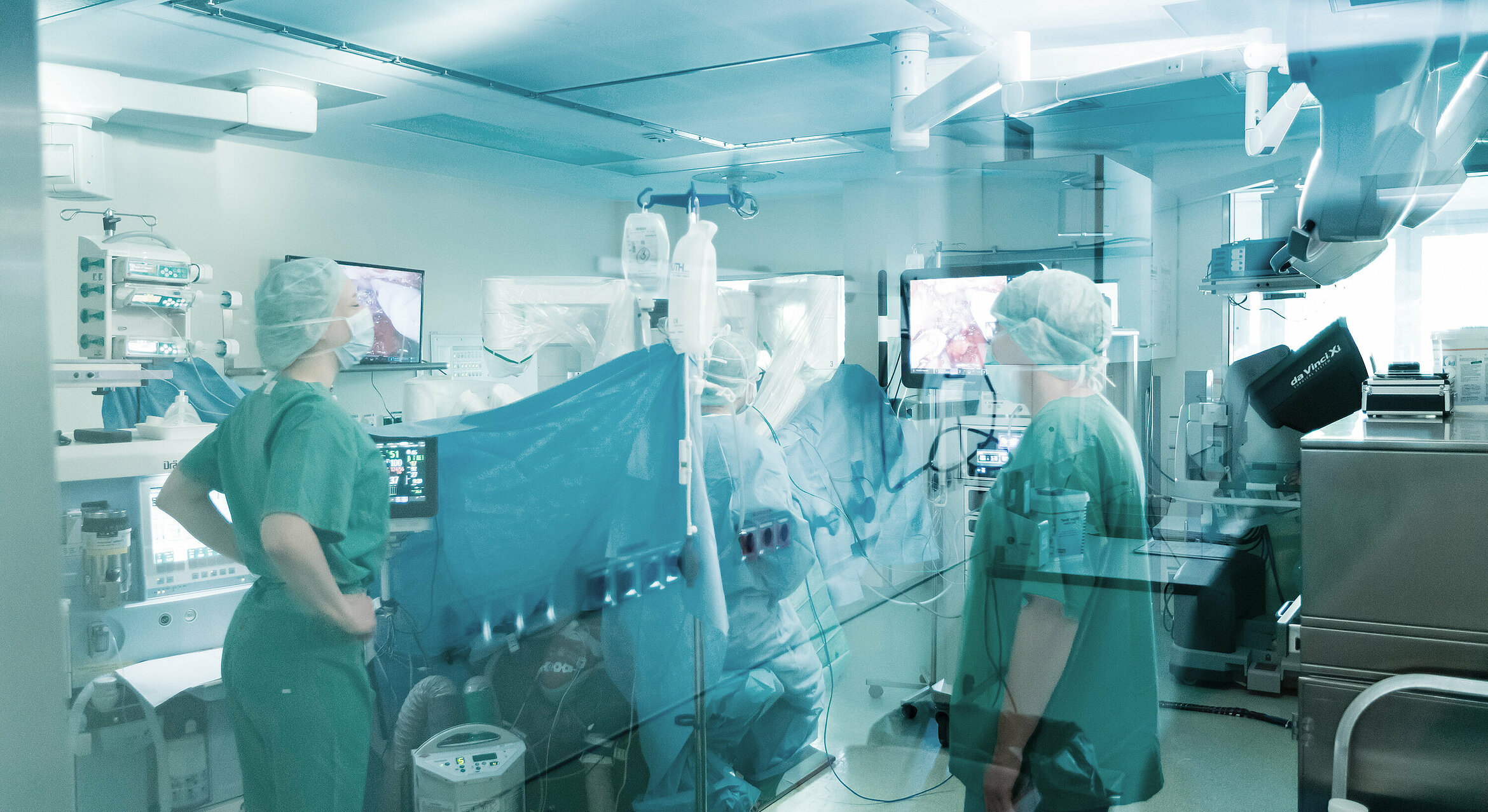
Radical prostatectomy – completely removing the tumour
The complete removal of the prostate (radical prostatectomy) is primarily recommended as a treatment method when the cancer is localised in the prostate. This surgery is currently the most common treatment approach and is an established, tried-and-tested method. It has been used to treat localised prostate carcinoma for many years.
A wealth of experience at the Martini-Klinik
The Martini-Klinik is a global leader in terms of the number of prostatectomy procedures performed. Our surgeons have operated on more than 34,000 patients. The Martini-Klinik performs more than 2,600 prostatectomies* every year.
This figure is all the more impressive when you consider that only 17% of all urology departments in Germany achieve the recommended minimum of 50 radical prostatectomies per year. It is indisputable that extensive surgical experience is a crucial factor in providing safe tumour control and securing the best possible quality of life for patients after such procedures.

The prostatectomy
How is the prostate removed? And how are continence and potency maintained if oncologically possible. A short explanatory film.
4.08 minutes
The complete removal of the prostate (radical prostatectomy) is primarily recommended as a treatment method when the cancer is localised in the prostate. This surgery is currently the most common treatment approach and is an established, tried-and-tested method. It has been used to treat localised prostate carcinoma for many years.
